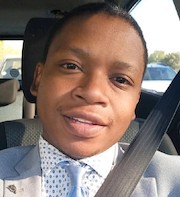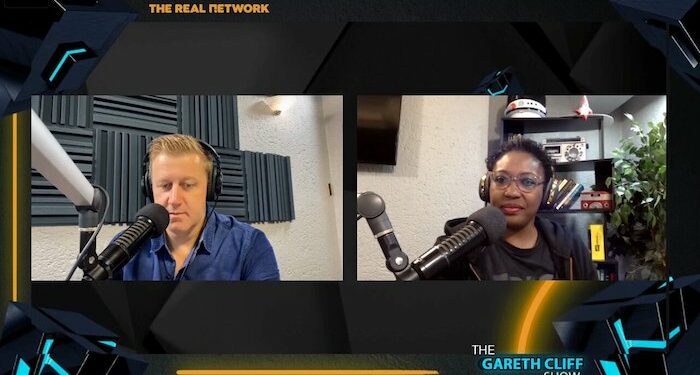When I received my first on-air opportunity on community radio around 2009, we used CDs as part of the play-out system, if you missed the on-air moment. You might find it somewhere online; social media as we know it was non-existent and we could broadcast exclusive content, and drive the social narrative forward.
Radio personalities in those days had a level of mystique, which added to their celebrity factor because the voice and limited media outlets where they conducted interviews were the main access points to their personality.
Media personalities could share their perspectives through interviews on mainstream media, which were filtered by newsroom editors and producers to drive listenership or viewers.
I remember meeting a listener for the first time during those early radio days, who was shocked that I was short, shy and so young while she was in her 40s and was within my core target audience at the time.
This culture, in this period, is gone; radio talent has to be on social these days and be active enough to build a strong, influential voice with a solid, engaged following.
Around 2015, radio stations, especially commercial radio, found a way to leverage social media, to drive radio station brand affinity and most importantly, to draw listeners back to listen live on air – which is important to grow and sustain on air audience figures, which is the core business.
This took many shapes, from featuring polls to hear the results on air, moving beyond SMSs to reading comments on social media, and sharing WhatsApp voice notes, which helped in many ways to keep listener inputs succinct etc. and then repurposing the on air content to live longer on social media, with a loop effect always to direct listeners back to listening live.
Cliff Central’s impact
The latter tactics are still being employed, of course. This formula worked for a while, until around the period Gareth Cliff delivered his ominous warning – that seemed alarmist at the time – that global media consumption trends were shifting audiences more towards podcasts or vodcasts, and this would be a major challenge to terrestrial radio.
He repeatedly uttered these sentiments when he was probed on why he left 5FM and why he did not seek other terrestrial radio opportunities. Of course his new online radio station, Cliff Central (now rebranded to The Real Network), was initially similar to the breakfast show offering he hosted at the SABC.
That, over time, proved not to be the winning dominant style of ‘vodcasts’ (visual podcasts) but boy, was he correct.
The style is spearheaded by the likes of Mac G, who also faced a traditional radio exit, not by choice, but has brought incredible influence in how vodcasts are approached, particularly in the South African radio landscape.
Compelling content
Vodcasts have now become one of the leading sources of exclusive and compelling content, using interview style-like methods more similar to television than radio with the kind of freedom no traditional platform can provide.
This I argue, was the challenge Tbo Touch (Touch HD App) and DJ Sbu (Massive Metro) may have faced with their initial online platforms, mirroring the radio on air clock somewhat. The likes of David Mashabela (King David Studio on YouTube) was lucky enough to join the party when the model of production and consumption habits by audiences were more evolved, as he has had much better success in the vodcast space.
Radio stations today face an incredible array of formidable share-of-content and audience market competition. Unlike that surprised listener that I met in 2009, a radio presenter’s personality and how they look cannot be a mystery anymore and their affinity towards listeners is now anchored primarily on their social media presence and supported by the amplification/star power that a radio station affords.
Content replication
More than just needing an influential and engaged social media presence from talent, radio stations also face the challenge of replication of content already consumed – particularly in the context of interviews, where the guest repeats what was probably done better on a vodcast before, while still facing the radio clock with its time constraints of other service/entertainment elements like music, sport bulletins etc that vodcasts don’t face. Then there are the obvious constraints from the BCCSA (he Broadcast Complaints Commission of South Africa).
Recall is one of the cardinal pillars to building audiences so they come back more often and also to develop affinity. I can recall several Mac Gs vodcast episode moments that trended on social media – like the nudist individuals who interviewed with no clothes on, which also shows the shifting values of society today.
Of course, shock radio was there back in the day, and it’s not the only form of creating recall but 15 minutes max radio interview compared to an entertaining/deeply authentic one hour conversation on a vodcast, can be tough to beat but not impossible.
Outdated values
The BCCSA is meant to protect audiences from consuming problematic content, explicit language etc. However, how do you beat Lillian Dube sharing her most intimate details on sexuality that she shared recently on Dineo Ranaka’s vodcast for example?
Although, vodcasts are winning audiences on socials, time spent ‘watching’ or ‘listening’ is not as clear to me as radio statistics are for example. But of course, digital software could provide this information.
My strong suspicion is that Tik ok, bite sized audience amplification consumption approach, is what has injected the vodcast revolution with a massive blow up online.
Anyone can be a content creator today, and so those barriers to entry that radio had to be more exclusive bring another challenge in our new media landscape feeding from Gen Z’s mass echo chamber content-sharing culture – where their lived experience is shared virtually with feedback experience from their peers. Oversharing, for example, which may apply more to previous generations, seems like a long-gone outdated value.
The challenge
Herein lies the challenge for radio in this multi-platform content creation and consumption era, where audiences are being pulled in so many different directions with a plethora of options to listen how and when they want to, as opposed to appointment listening.
Anele Mdoda’s Breakfast Show on 947 is objectively handling these changes well and is a fantastic case study on approaches radio stations could take in South Africa to navigate these highly volatile times.
Anele is one of the few radio greats from the good old days, who brings an arsenal of experience, a following and name recognition. 947 has taken a similar approach to the one they had with Jeremy Mansfield (The Rude Awakening Breakfast show before 94.7 Highveld Stereo radio station rebrand), where a team of voices with different perspectives, but aligned to key target demographics, are assembled to support Anele as the hero of the show – and they do this well.
Leveraging social media presence
Anele’s ability to leverage her social media presence and influence is one of the reasons for her success. Her recent posts on her travels to Kenya, where she shared what came across as real-time authentic struggles with the airline, which led her to missing her radio show, provided a compelling narrative that drove listeners right back to listening to the ‘full story’ live on air when she returned.
She gets this right on so many occasions, whether it’s her view on potholes in Joburg –which could be top of mind for her audience – or asking her followers to explain the meaning of a song she discovered, or her daily moments with her son.
It all feels organic, and one can tell that sometimes it’s just to live on social to build affinity and at times she builds these tantalising throw forwards as well as mini-story arcs to drive audiences to her radio show. It also matters how we treat interviews in particular today on air, and here too, Anele’s treatment of radio interviews shows incredible interest in pushing against the grain in a way that rivals vodcast content.
Radio needs to build solid talent once more and not just source talent from influencers only, which seems to be a trend.
Technical on air delivery skills are key, because once the listener chooses to listen live on air, techniques to keep listeners engaged from the presenter and the way the clock is set, become pivotal.
Hone technical skills
Andy Maqondwana on Kaya FM is the perfect example of honed technical skills for on air delivery – she tops and tails her links well, and plans her sequences of content – something that influencers are not necessarily trained to do.
Radio needs to continue to create community, an element that remains fractured in the vodcast/podcast online space. Community is created by proper programming formatting that is attuned to listeners’ needs and a marketing arsenal that fits right into the listener’s lifestyle.
Finally, vodcasts have major challenges themselves, with this plethora of similar style of production diluting a great deal of their impact, but there is no doubt this evolution has been an affront to radio and forces it to respond in how it will produce and package its content to include more visual elements, a trend that is beginning to blossom.
 Kabelo Mekoa is a dynamic marketing creative with a radio programming and television content background. He has over 10 years of experience in the media sector, largely as a producer and programme manager. He holds an Advanced Radio Certificate from Wits University. He holds a BA degree in Philosophy, Politics and Economics. He is currently the development and creative associate at Media Beat – a boutique marketing agency based in Cape Town and Johannesburg, which specialises in integrated marketing campaigns in relation to radio, television and digital channels, as well as a host of other offerings.
Kabelo Mekoa is a dynamic marketing creative with a radio programming and television content background. He has over 10 years of experience in the media sector, largely as a producer and programme manager. He holds an Advanced Radio Certificate from Wits University. He holds a BA degree in Philosophy, Politics and Economics. He is currently the development and creative associate at Media Beat – a boutique marketing agency based in Cape Town and Johannesburg, which specialises in integrated marketing campaigns in relation to radio, television and digital channels, as well as a host of other offerings.














